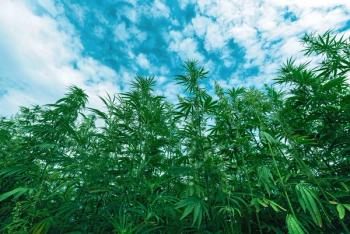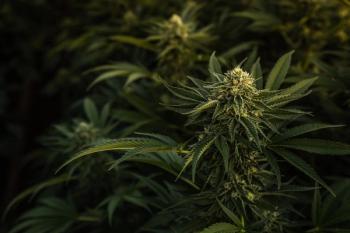
Cannabis Science and Technology
- October 2022
- Volume 5
- Issue 8
- Pages: 10-13
Quantitative Spectroscopy Pitfalls and Practicalities, Part IV: The Finale

The final part in this series of pitfalls to avoid and practicalities covers the importance of cleanliness, how many standards to run, how to spot outliers, and important experimental variables to control.
We continue our discussion of the pitfalls and practicalities of quantitative spectroscopy with a discussion of several practical tips to help you improve your analyses. We will cover the following topics: the importance of cleanliness, how many standards to run, how to spot outliers, and important experimental variables to control. Some of these tips seem obvious, but either myself or people I know have made these mistakes, so now is your opportunity to learn from our mistakes. A lot of these tips apply to developing chromatography methods as well, so if you are a chromatographer, please read this column.
Cleanliness is Crucial!
This may seem obvious, but you would be surprised how often lack of cleanliness can mess up a calibration. Simply put, cleanliness means every surface that comes into contact with a sample needs to be clean. This includes sample container walls, sample container caps, syringes, weighing pans, extraction funnels, sample cells, syringes, and so on. If not, contamination can introduce impurities into your sample that can throw off your quantitation.
Also, all parts of the instrument that come into contact with the sample need to be clean. For chromatographs this includes the injector, all tubing, the column, and the detector. For high performance liquid chromatography (HPLC), both refractive index and ultraviolet-visible (UV-vis) detectors use light to analyze the sample. Therefore, there are detector cell windows through which the light must pass to do its job. It is easy for these windows to become dirty, which completely throws off quantitation. For spectroscopy, all sample windows and cells need to be cleaned before and after the sample comes into contact with them. Be how your mother encouraged you to be—clean up after yourself—and you will be fine.
Be Aware of Chemistry Within Samples and Between Samples and Cells
As stated by protagonist Mark Watney in the excellent sci-fi novel by Andy Weir, The Martian, “Chemistry is a messy bitch” (1). What this messiness means for us is that chemical reactions within a sample, and between a sample and anything it contacts can spell disaster for a calibration. When we make up standards for a calibration, we often tacitly assume that the standards are stable over time, but chemistry within a sample can cause composition to change over time. A way to test sample stability is to make up your standards, take spectra of them, and then continue to take spectra over the ensuing hours and days. Then, compare the spectra to each other. If the spectra look the same, great! However, if they have changed over time you need to take that into account when generating a calibration. For example, if a sample is not stable over the course of hours or days, make sure to scan it immediately after creating it. Better yet, try to determine why the sample is unstable and fix it. At minimum, the chemical composition of standards and unknowns must remain the same on the time scale needed to make and analyze a sample. Also, if standards are not stable over time, you will need to make fresh ones each time you recalibrate or perform a calibration check.
Samples can also react with containers and sample cells. In infrared spectroscopy, we commonly use sodium chloride (NaCl) and potassium bromide (KBr) windows as sample cells because they are transparent in the infrared. However, these materials are water soluble, and any sample containing an appreciable amount of water will damage them. Back in graduate school when I was a teaching assistant, I can’t tell you how many sets of KBr windows I lost by freshmen washing them with water in the sink and being surprised when the windows dissolved and went down the drain. All this despite clear warnings about keeping water away from the windows!
Same Chemical Environment for Standards and Unknowns
In previous columns on Beer’s Law and quantitative pitfalls to avoid (2–7), we discussed that the absorptivity is matrix sensitive. In other words, the absorptivity of a molecule is sensitive to its chemical environment. Since the fundamental assumption of quantitative spectroscopy is that the absorptivity is the same for the standards and unknowns, keeping the chemical environment constant is particularly important. As much as possible then the temperature, pressure, pH, and composition of standards and unknowns need to be as similar as possible.
Thus, do not measure the standards at room temperature and the unknowns at 100 °C. Additionally, do not measure the standards in water solution if the unknown will be an acetone solution. In the end you will have a calibration applicability problem, which means you will be applying the wrong calibration to your unknowns. The tricky part here is that the inapplicable calibration may give good results on the standards which will mislead you into thinking it will work well on the unknowns. Ultimately, here the problem is that you will be using the wrong calibration for the unknowns.
Same Instrumental Parameters for Standards and Unknowns
An important experimental parameter to control is the instrumental resolution, which is a measure of how well an instrument distinguishes peaks that are close together (8). This parameter is measured in wavenumber units (cm-1). For example, a spectrum measured at 8 cm-1 resolution means the scan can distinguish between peaks that are 8 cm-1 apart or more. Changing the instrumental resolution used to measure a spectrum has a huge impact on spectral appearance as seen in Figure 1.
The top of the figure shows the mid-infrared spectrum of water vapor measured at 0.5 cm-1 resolution. Note that there are a series of nice sharp peaks that baseline resolved, any of which could be used for a quantitative analysis. The bottom of Figure 1 shows the spectrum of the same sample of water vapor, measured on the same instrument, but at an instrumental resolution of 32 cm-1. Note that rather than there being a series of nice sharp lines this spectrum contains a big, broad blob. This is because at a resolution setting of 32 cm-1 the instrument cannot resolve peaks that are close together, thus they combine into the broad peak seen. The point is that the peak heights and areas in the two spectra are different, so using different resolution settings for the standards and unknowns adds a huge source of error to a calibration.
Another scanning parameter it is important to control is the number of scans used. This is because the number of scans affects a spectrum’s signal-to-noise ratio (SNR). We have discussed SNR previously (5). The SNR of a spectrum depends upon the number of spectra averaged together according to Equation 1
where SNR is the signal-to-noise ratio and N is the number of scans averaged together.
If the standards and unknowns are measured with a differing number of scans, they will have different noise levels affecting accuracy.
Lastly, the spectra of the standards and unknowns should be measured on the same instrument. In theory, if you scan the same sample on two different instruments, you should obtain the same results. However, the reality is that despite the best efforts of instrument manufacturers there are small variations between instruments, or as a colleague of mine likes to say, “instruments have offsets.” This means typically one instrument will give results a fixed amount and direction from another. For example, one instrument might consistently measure the tetrahydrocannabinol (THC) content in cannabis buds 2 weight percent lower than another. There exists a whole field of analytical chemistry devoted to determining how best to transfer calibrations from one instrument to another. Rather than struggling with this problem, it is best to measure all standards and unknowns on the same instrument.
Same Sampling Cells for Standards and Unknowns
Everything a light beam sees on its way from source to detector will become part of the measured spectrum. This includes the cell and window materials used to contain the sample, and the crystals used in attenuated total reflectance (ATR) experiments (8). Varying these things will add error to your quantitative measurements. For example, don’t use a NaCl cell for the standards and a KBr cell for the unknowns. Or for ATR don’t use a diamond crystal for the standards and a zinc selenide crystal for the unknowns. Changing cell and window materials will change the spectra measured and add error to your analysis.
How Many Standards Should I Use?
This is a common question in quantitative spectroscopy. Equation 2 gives the minimum number of standards you should run to obtain a calibration.
where n is the number of analytes being predicted.
For a single analyte quantitation the minimum number of standards is (2 + 2) or four. However, I always use more because when it comes to calibrations the more data points the better. We have not discussed multianalyte quantitative analysis in this column series because it is beyond the scope of what I want to do here. However, my own work has shown that spectroscopy can accurately quantitate multiple analytes including in cannabis flower, extracts, distillates, and tinctures (9–15).
Figure 2 shows a calibration line for the prediction of the percent of isopropyl alcohol (IPA) in a water solution.
Note that for this one analyte I used five data points. However, there are spaces between the data points, and by drawing the line seen we are assuming the behavior of the calibration between these data points follows the line drawn, which may or may not be the case. Thus, the reason more data points are better in a calibration is that by filling in the gaps in a calibration line we can be sure of the shape of the line rather than assuming it.
Measure Two Spectra of Each Standard and Then Subtract Them
The idea behind measuring two spectra of each standard is to see if they are stable, as was discussed above. Spectra of the same standard should be the same, so long as you measure them on the same instrument under the same conditions. However, if the two spectra turn out different it means there is a variable in your experiment that you do not have under control. A good way to determine if two spectra are the same is to subtract them. A detailed description of spectral subtraction is beyond this column, but can be found elsewhere (8). Briefly, there exist software packages where the absorbances in one spectrum are subtracted from another. An illustration of subtracted spectra is shown in Figure 3.
If the two standard spectra are the same your subtraction result should be a flat line because all the absorbances at all wavenumbers in both spectra should be identical. The reality is that the noise characteristics in spectra are always different, so if you subtract two spectra of the same standard and see nothing but noise, as seen in the top of Figure 3, the two spectra measured were identical. The bottom of Figure 3 shows the result of subtracting two spectra of the same standard where the spectra were different. Note that in addition to noise there are real spectral features that upon inspection were from the analyte (in Figure 3 we are ignoring the CO2 peaks, which are an artifact). In this case, you should not build a calibration, but instead go back to the drawing board and figure out what variables are out of control.
Conclusions
We have added seven things to our list of quantitative spectroscopy tips and pitfalls to avoid. We began with emphasizing that cleanliness is important, being aware of the chemistry of your sample and sampling device, and making sure the chemical environment is as similar as possible in the standards and unknowns so that the absorptivity is reproducible. I then emphasized the importance of controlling experimental parameters, including scanning conditions and sampling cells. Lastly, we discussed the importance of using many data points in a calibration, and why it is a good idea to measure two spectra of each standard and subtract them to see if anything has changed.
References
- A. Weir, The Martian (Crown Publishers, an imprint of the Crown Publishing Group, a division of Random House LLC, a Penguin Random House Company, New York, New York, 2014).
- B.C. Smith, Cannabis Science and Technology 5(2), 10-13 (2022).
- B.C. Smith, Cannabis Science and Technology 5(3), 10-14 (2022).
- B.C. Smith, Cannabis Science and Technology 5(4), 8-15 (2022).
- B.C. Smith, Cannabis Science and Technology 5(5), 8-13 (2022).
- B. Smith, Cannabis Science and Technology 5(6), 8-11 (2022).
- B.C. Smith, Cannabis Science and Technology 5(7), 8-11 (2022).
- B.C. Smith, Fundamentals of Fourier Transform Infrared Spectroscopy, 2nd Edition (CRC Press, Boca Raton, Florida, 2011).
- B.C. Smith, Quantitative Spectroscopy: Theory and Practice (Elsevier, Boston, Massachusetts, 2002).
- B.C. Smith, M. Lewis, and J. Mendez, “Optimization of Cannabis Grows Using Fourier Transform Mid-Infrared Spectroscopy,” PerkinElmer Application Note (2016).
- B.C. Smith, Cannabis Science and Technology 2(6), 28-33 (2019).
- B.C. Smith, Cannabis Science and Technology 3(6), 24-38 (2020).
- B.C. Smith, Terpenes and Testing, Jan.-Feb.32 (2018).
- B.C. Smith, Terpenes and Testing, Nov.-Dec. 48 (2017).
- B.C. Smith., C.A. Fucetola, K. Ehrmantraut, and T. Hagan, Terpenes and Testing, Sept./Oct. 19-24 (2020).
About the Columnist
Brian C. Smith, PhD, is Founder, CEO, and Chief Technical Officer of Big Sur Scientific. He is the inventor of the BSS series of patented mid-infrared based cannabis analyzers. Dr. Smith has done pioneering research and published numerous peer-reviewed papers on the application of mid-infrared spectroscopy to cannabis analysis, and sits on the editorial board of Cannabis Science and Technology. He has worked as a laboratory director for a cannabis extractor, as an analytical chemist for Waters Associates and PerkinElmer, and as an analytical instrument salesperson. He has more than 30 years of experience in chemical analysis and has written three books on the subject. Dr. Smith earned his PhD on physical chemistry from Dartmouth College.
Direct correspondence to:
How to Cite this Article:
B. Smith, Cannabis Science and Technology® Vol. 5(8), 10-13 (2022).
Articles in this issue
over 3 years ago
New Data on the Environmental Impact of Cannabis CultivationNewsletter
Unlock the latest breakthroughs in cannabis science—subscribe now to get expert insights, research, and industry updates delivered to your inbox.




